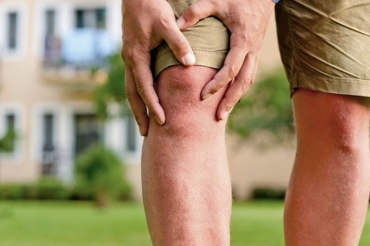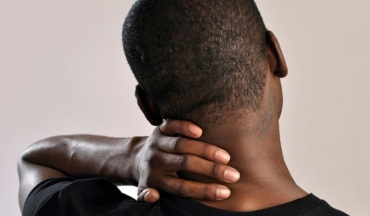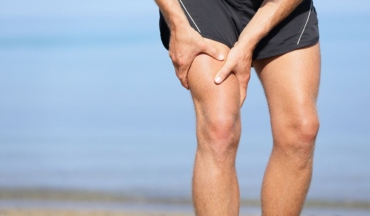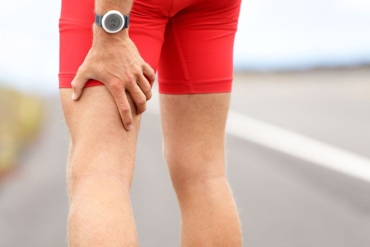Download and print the injury report form here.
Overview
One of the most common and serious knee injuries in sport is an anterior cruciate ligament (ACL) sprain or tear. A typical ACL injury will take a player away from sports for 6 to 12 months and can result in long-term consequences for their health and athletic career. They are often left with functional deficits, knee instability and early-onset osteoarthritis. Once an athlete injures their ACL they have a 25% risk of sustaining a second ACL injury. However, many of these long-term consequences can be avoided with successful rehabilitation and a safe return to sport.
Statistics
- There are roughly 250,000 ACL tears per year
- More than 75% of ACL injuries are non-contact
- The rate of ACL tears is 2 to 8 times higher for females than males
Anatomy of the Knee
click to view larger version
- The knee joint comprises 3 bones: the femur, the tibia and the patella.
- There are 2 menisci which are disc-like structures that sit between the femur and the tibia and act as shock absorbers, decrease friction and aid in joint stability
- There are 4 primary ligaments in the knee that hold the bones together and stabilize the joint:
- — Medial and lateral collateral ligaments: these run along the side of the knee and control sideways motion of the knee
- — Anterior & posterior cruciate ligaments: these form an X deep in the knee and work to prevent forward and backward translation of the knee joint
Mechanism of Injury
- Contact: 20% direct collision
- Non-Contact: 80%
- — Changing direction rapidly
- — Landing from a jump incorrectly
- — Plant and cut
- — Sudden deceleration with knee extended
What Puts You at Risk?
- Being female:
- — Increased angle from pelvis to knee puts more stress on the ACL
- — Differences in neuromuscular control, strength and mechanics
- Inadequate muscle strength, co-ordination or balance, especially an imbalance between quadriceps and hamstring strength and gluteal muscle weakness
- Improper training for sport-specific movements, including poor landing and cutting technique
Treatment & Rehabilitation
Treatment for an ACL injury varies depending on the degree of damage done to the ACL and the surrounding structures. ACL injuries often require surgical reconstruction, especially if there is a complete tear of the ligament. Non-surgical management may be sufficient in elderly or less active individuals if the stability of the knee joint is intact. Whether your treatment involves surgery or not, rehabilitation is highly important for regaining function of the lower extremity.
When Can I Go Back to Aport?
With the risk of ACL re-injury being as high as 25%, it is crucial that the athlete is fully prepared both physically and mentally before returning to play. This is achieved through a rigorous course of rehabilitation, lasting for 6 to 12 months after injury. It is very important when designing a rehabilitation program that you have an understanding of the physical demands of the sport. For example, soccer players repeatedly produce forceful actions (running, cutting, jumping, sprinting) with short recovery periods. This requires power, co-ordination, balance and proprioception. If the rehabilitation program touches on each of the key elements and skills required for the sport, the athlete will be able to return to sport with a much lower risk of re-injury. The following section will outline the key concepts and exercises that should be included in a rehabilitation program to ensure a safe return to play. The focus will be on return to play for a soccer athlete, however the exercises and skills can easily be modified and applied to different sports.
PHASE 1 GOALS: Early Stage Rehabilitation (weeks 0 to 6 — timelines are approximate)
- Pain and swelling control
- Early weight-bearing and gait training
- Range of motion exercises
- Quadriceps muscle activation – quad sets, straight leg raises, muscle stimulation
- Maintain non-involved limb strength
- Trunk and hip basic core stability exercises
PHASE 2 GOALS: Progressive Strengthening and Neuromuscular Retraining (weeks 4 to 12)
- Regain quadriceps and hamstring strength to 85% of the uninjured leg
- Achieving proper lower extremity alignment during activities
- Pelvis and trunk stabilization
- Neuromuscular retraining (balance, proprioception and functional exercises)
During Phase 2, weight-bearing, closed-chain exercises are introduced to rebuild lower extremity strength. Particular attention must be paid to proper lower extremity alignment to prevent rotation and valgus at the knee joint. The exercises in this phase should begin on a stable surface and gradually progress to unstable surfaces to challenge the neuromuscular control of the knee. Incorporating the soccer ball (or any sport-specific equipment) into exercises in this phase will help the athlete prepare for the more advanced, sport-specific exercises during the later phases of rehab.
Exercises to include in Phase 2
Strength:
- Squat and lunge progressions
- Stationary cycling with progressive resistance and speed increases
- Leg press, calf raises, bridging
- Forward bend with single leg stance (single leg deadlift)
- Running in a straight line at 12 weeks if athlete is able to control alignment during a single leg squat
Trunk and Pelvis Stability:
- Plank variations
- Clamshells and side leg raise
Neuromuscular Control:
- Single leg stance ball toss & single leg stance figure 8 with soccer ball
- Single leg mini squat
- Single leg balance with partner pushes
Flexibility:
- Quadriceps, hamstrings and calf stretching
- Foam roll ITB & glutes
PHASE 3 GOALS: Sport Specific Training, Plyometrics and Agility (months 4 to 12)
- Return the player to sport at a reduced level, slowly bringing the player up to unrestricted practice
- Progress complexity of strengthening and neuromuscular control exercises
- Sport-Specific running and agility drills introduced
- Proper knee alignment and landing technique during hopping activities
During Phase 3, the drills become more complex and the player is gradually introduced back into a team setting at a reduced level. It is important that the athlete is progressed gradually during this stage as a lot of rehabilitation programs fail when there is a rapid increase in exercise load.
Exercises to Include in Phase 3
Strength:
- Continue with strengthening exercises from Phase 2
Running Drills:
- Forward and backward jog
- Side shuffle & cariocas
Plyometrics:
- Forward / backward hop – 2 legs
- Lateral hop – 2 legs
- Single leg hops forward
- Bounding
Sport Specific Agility:
- 4 Corner run
- Zigzag run
- Drills combining quick-feet, short sprints, cutting and accelerating, and body rotations
PHASE 4: Return to Sport (months 6 to 12)
The following criteria must be met in order for the athlete to return to sport:
- Successful completion of the “Hop Tests”
- Ability to demonstrate proper knee alignment and technique during all sport related activities
- Quadriceps and hamstring strength at 85-95% of the uninjured leg
- Psychological readiness
How Do I Prevent ACL Injury?
Many of the drills and exercises that are incorporated in the ACL rehabilitation program can be used on a regular basis for ACL injury prevention. Many studies have shown the positive effects of a neuromuscular training program in preventing knee injury. Prevention programs that address neuromuscular control of the lower extremity through strengthening, plyometrics and sports-specific agility exercises can reduce injury rates by as much as 30 to 50%. The FIFA 11+ is an excellent prevention program and, when incorporated regularly into training, can drastically reduce the incidence of ACL injury.






